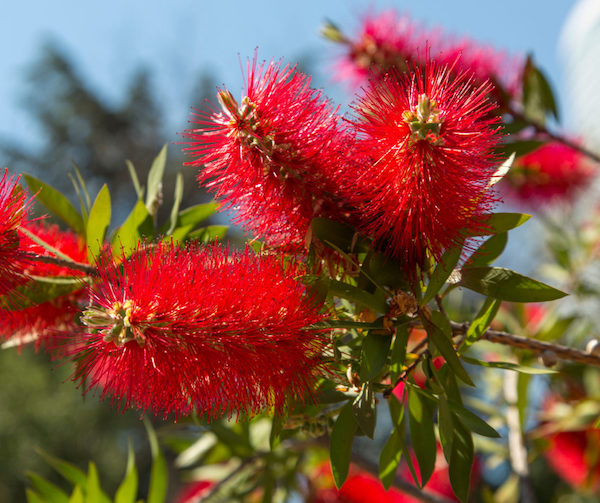
Bottlebrush plants generally do not require frequent feeding, but they can benefit from occasional fertilization during their growing season. Here are some tips on what kind of food to give your Bottlebrush plant:
Choose a balanced fertiliser: Look for a fertiliser that is specifically formulated for flowering shrubs or trees. The fertiliser should have balanced amounts of nitrogen, phosphorus, and potassium, such as a 10-10-10 or 15-15-15 blend.
Apply the fertiliser at the right time: Apply fertiliser to your Bottlebrush plant in the early spring before new growth appears. Avoid fertilizing in the fall, as this can stimulate new growth that may not have enough time to harden off before winter.
Follow the recommended dosage: Be careful not to over-fertilise your Bottlebrush plant, as this can damage the roots and foliage. Always follow the recommended dosage on the fertiliser packaging.
Water the plant after fertilizing: After applying fertiliser, water your Bottlebrush plant thoroughly to help distribute the nutrients evenly throughout the soil.
Use organic fertilisers: If you prefer to use organic fertilisers, consider using compost or well-rotted manure as a soil amendment. These organic materials can provide slow-release nutrients to your plant without the risk of over-fertilizing.
Remember, Bottlebrush plants do not require frequent feeding, so be careful not to overdo it. With proper fertilization and care, your Bottlebrush plant should thrive and produce beautiful blooms.
 |
Gardening Expert: |
If you can't find what you are looking for on the website then you can ask one of our experts. To get in touch with us Click Here
We will try to get back to you with an answer as soon as we can.
Bottlebrush plants are a genus of flowering plants native to Australia and parts of the Pacific Islands. They are named for their distinctive cylindrical flowers that resemble the shape of a bottle brush.
Bottlebrush plants are evergreen shrubs or trees that can grow up to 15 feet in height. They have narrow, pointed leaves that are typically dark green in colour. The flowers of the bottlebrush plant are cylindrical in shape, with a cluster of small, brightly coloured stamens that give the plant its distinctive appearance. The flowers come in shades of red, pink, yellow, and white, depending on the species.
Bottlebrush plants are easy to grow and care for. They prefer well-draining soil and full sun exposure, but can also tolerate partial shade. The plants are drought tolerant once established, but will benefit from regular watering during periods of dry weather. Pruning should be done after flowering to promote new growth and maintain the shape of the plant.
Bottlebrush plants are commonly used as ornamental plants in gardens and landscaping, and can be planted in containers or as hedges. They are also popular for attracting birds and other wildlife to the garden, as the flowers provide a source of nectar and pollen. Some species of bottlebrush plants are also used in traditional medicine for their anti-inflammatory and antibacterial properties.
Bottlebrush plants are a beautiful and unique addition to any garden or landscape. With their bright colours and distinctive flowers, they are sure to catch the eye of any passerby. With proper care and cultivation, they can thrive in a variety of growing conditions and provide years of enjoyment for gardeners and plant enthusiasts.
Did you find this answer useful? Subscribe to our newsletter for gardeing news, projects, special offers and competitions.
Royal Botanic Garden Sydney
Sydney, Australia
Singapore Botanic Gardens
Singapore
RHS Garden, Wisley
Woking, United Kingdom
Royal Botanic Gardens, Kew
Richmond, United Kingdom
Royal Botanic Gardens Victoria
Melbourne, Australia
Koishikawa Korakuen Gardens
Tokyo, Japan